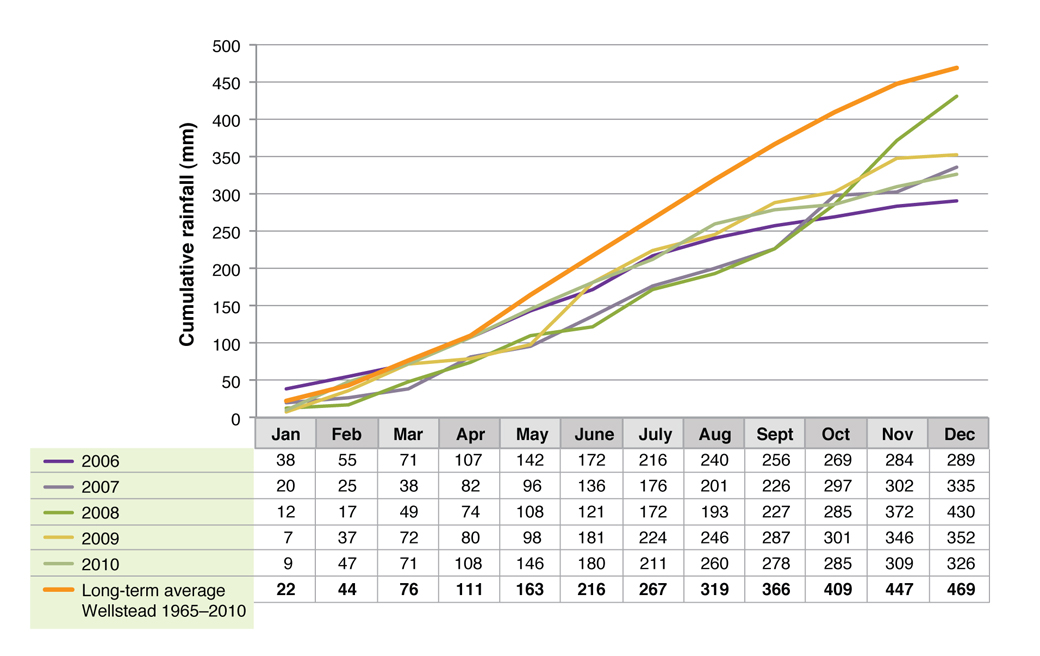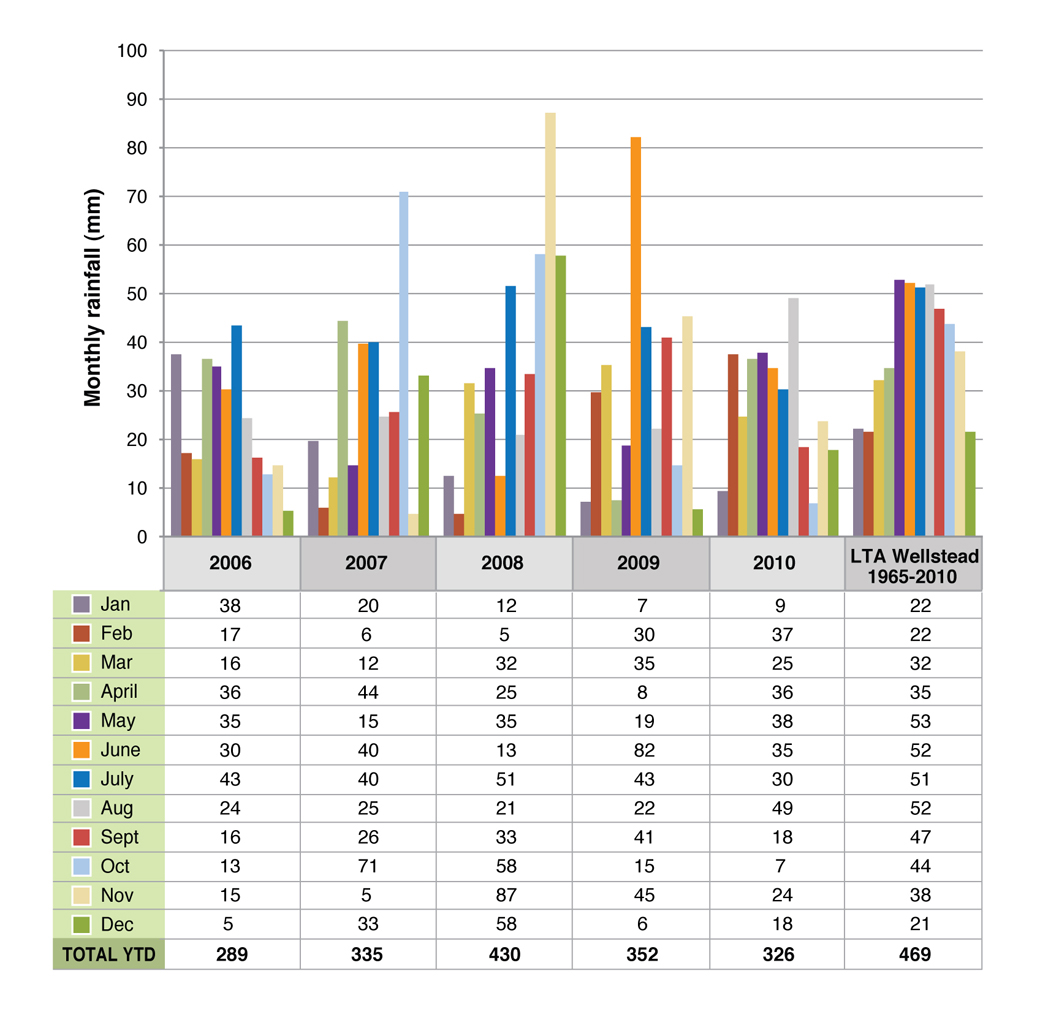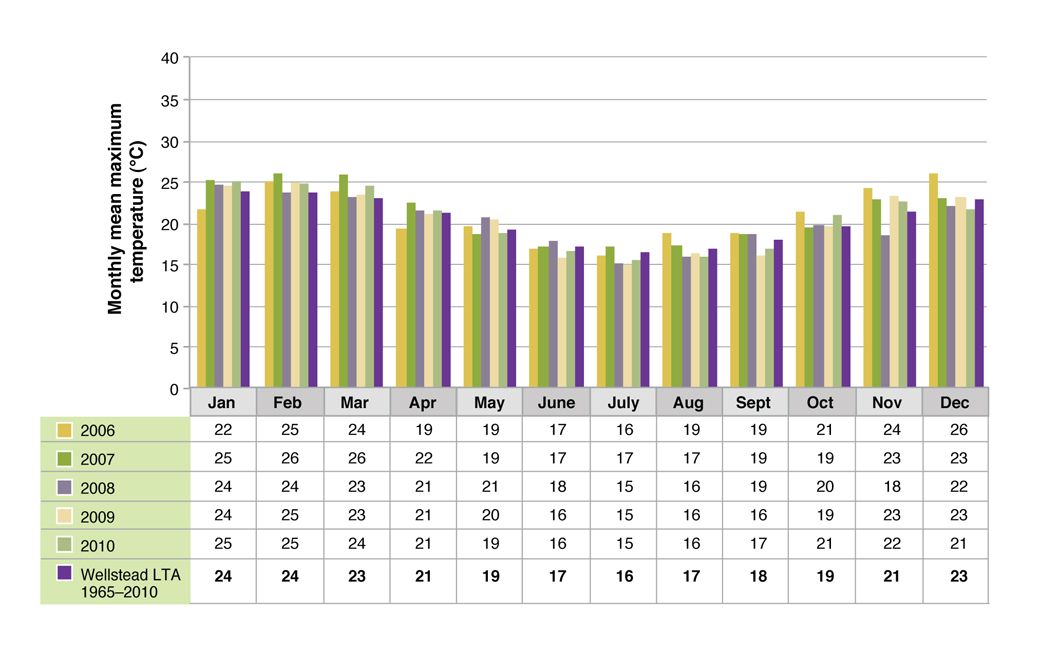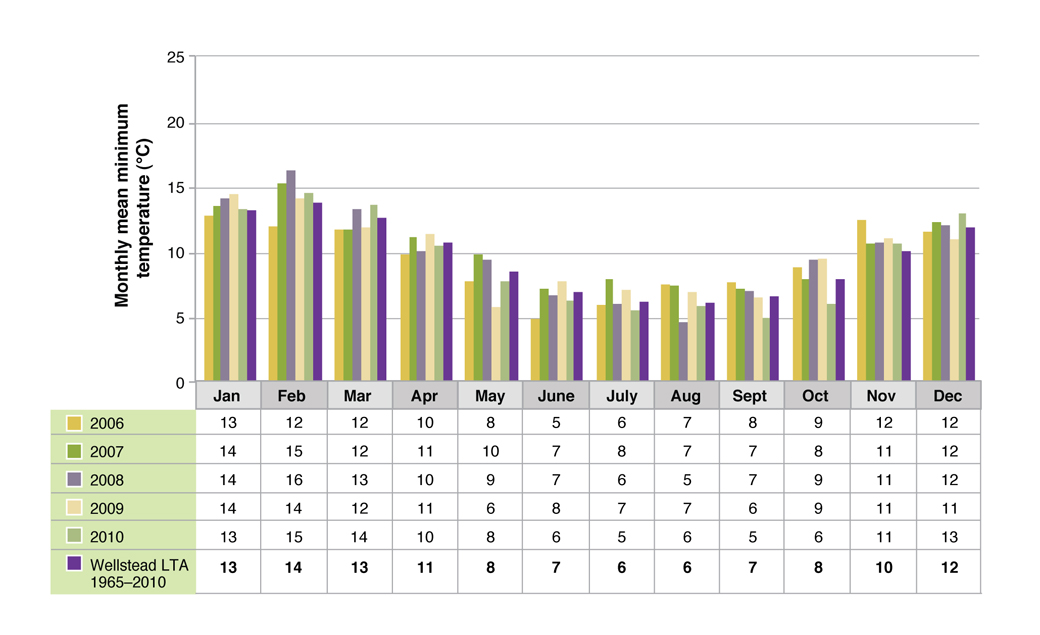Albany EverGraze Proof Site Climate
The high rainfall zone of South-West Australia is characterised by a Mediterranean climate. On average 29% of rainfall falls outside the growing season which is typically from April to October. Mean annual rainfall for the period 1970 to 2010 was 467 mm. Details of climate and variability throughout southwest Victoria can be found in the Regional Context.
Figures 1 and 2 describe the rainfall during the Albany Proof Site experimental period. Annual rainfall was below average for every year between 2006 and 2010 – essentially the field work was conducted during an unprecedented drought. The site consistently received below average rainfall in both winter and early spring (the only exception is June 2009) which led to poor spring pasture growth.
Figures 3 and 4 describe annual average maximum and minimum temperatures for the Albany Proof Site located at Wellstead. Wellstead like Albany has quite mild summer and winter temperatures and the experimental period was relatively similar to the long-term average. However 2006 was a little odd with a wet start and very dry finish leading to a cooler summer and colder winter.





